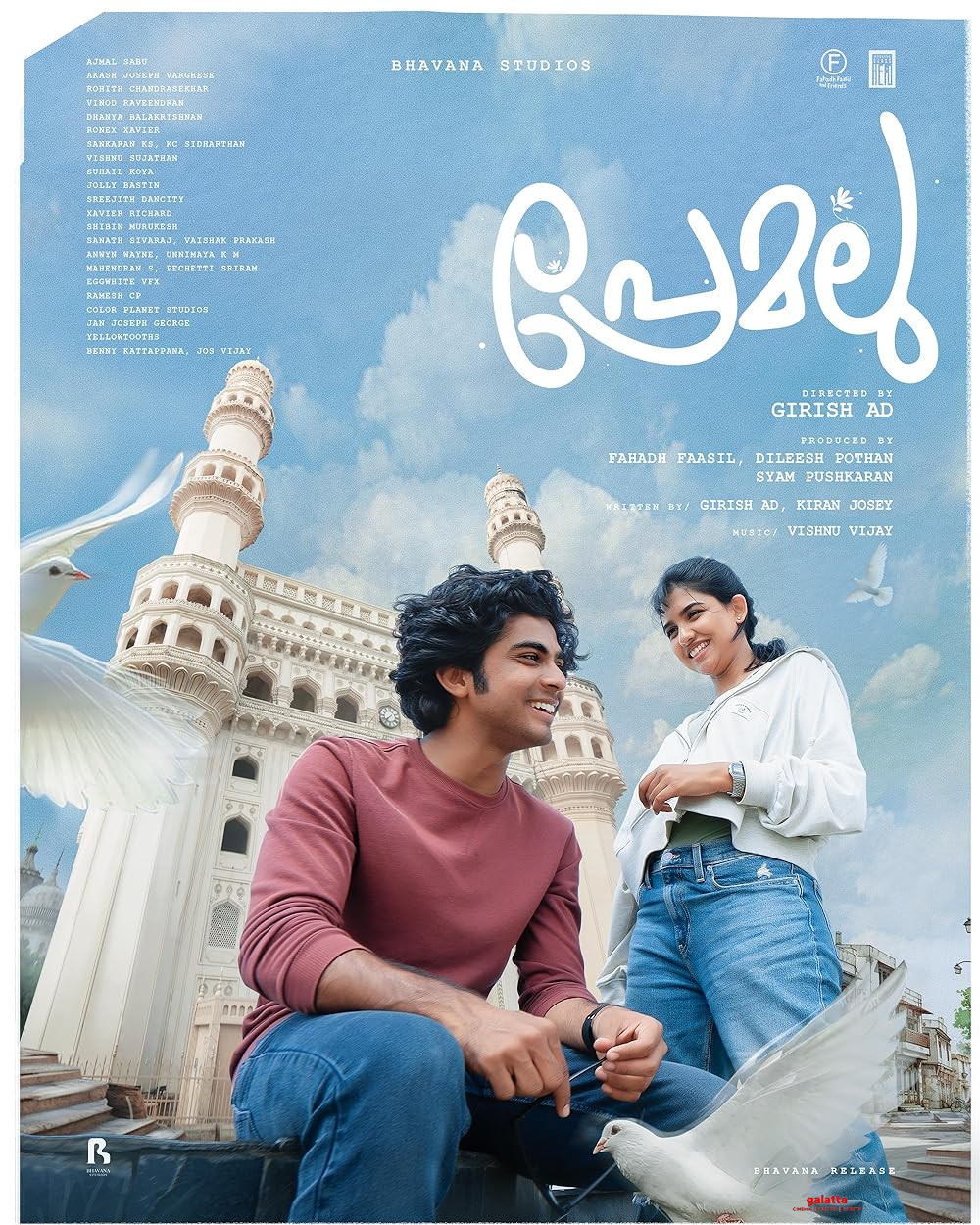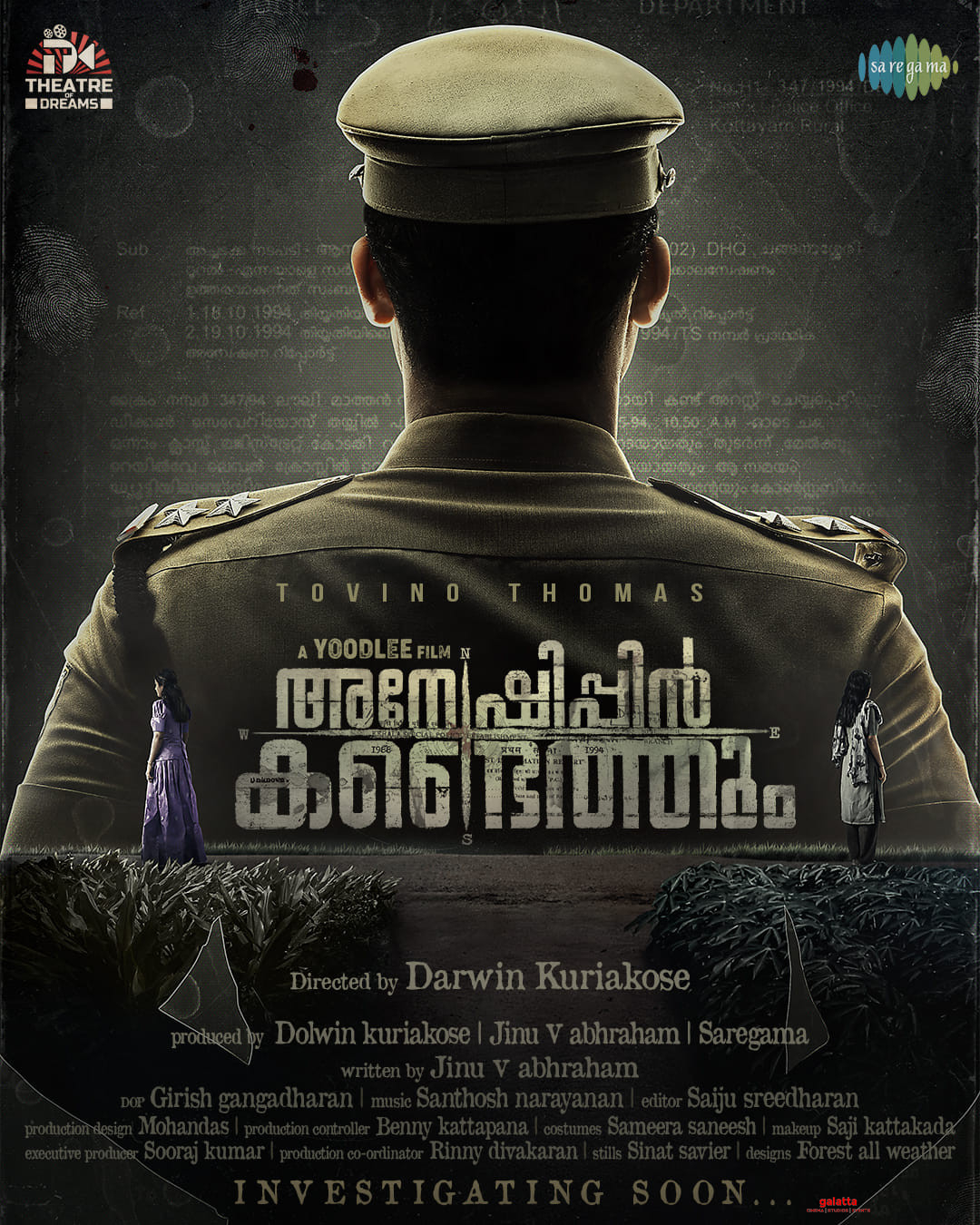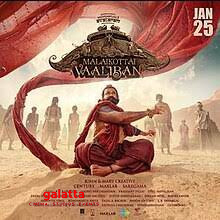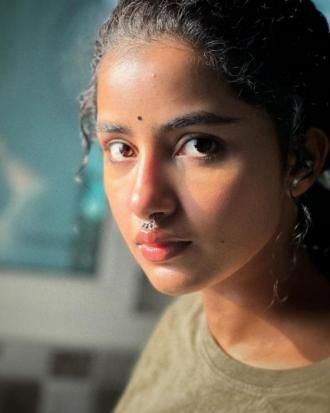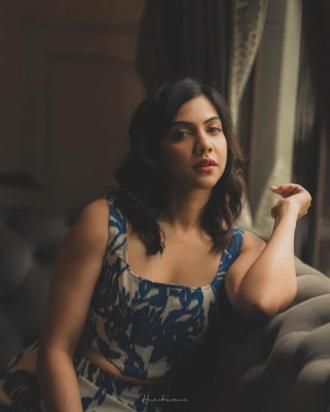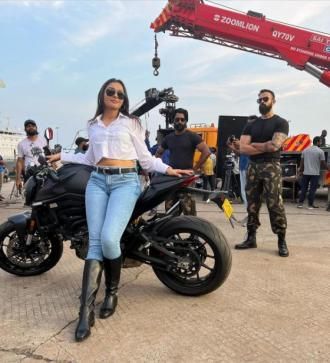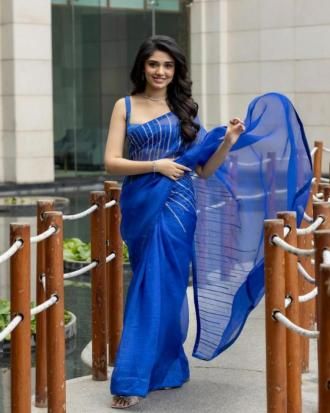Bramayugam Movie Cast & Crew
Halfway into Bramayugam, I immediately recalled what Martin Scorsese once said about using black-and-white to serve an artistic purpose in Raging Bull—a few reasons. To stay true to an earlier period, to tone down the colour of the blood, and to suit characters that are not likeable, among others. This format makes perfect sense in the case of Bramayugam because it seems to take place in a realm between life and death, between black and white... This choice also speaks to the colourless, excruciating life of isolation led by two principal characters. (Remember Willem Dafoe and Robert Pattinson in The Lighthouse, also shot in black-and-white?).
In Bramayugam, a considerable amount of blood gets shed when the events reach a feverish crescendo. The monochrome palette makes even the central setting, a haunted feudal mansion way past its expiry date, seem as though it is bleeding when an unnatural downpour begins. This mansion has... a character of its own. Black and white helps tone down the repulsion at seeing some of its most decomposed corners, of human or otherwise. When a famished Thevan (Arjun Ashokan) gulps down rice porridge, I dreaded the thought of his fingers stumbling upon something unsavoury.
Bramayugam plays on the 'House of Horrors' trope in inventive ways. As for its residents? There could be three or four or more. Some are likeable, some not. But how can we say for sure? Writer-director Rahul Sadasivan is careful not to get us too attached to any of them because he has a damn good reason. Even if we put aside all the possible reasons for using black and white, let's acknowledge how cinematic the format looks -- that is, of course, when there is a gifted cinematographer (Shehnad Jalal) and director with a deep understanding of light and shadow, contrast, and depth. With its splendidly classic, otherworldly quality, Bramayugam is a treat for photography enthusiasts, especially those specialising in monochrome.
I first saw Sadasivan's last film, Bhoothakalam, one morning because I was apprehensive about a sleepless night. But the time of the day notwithstanding, Bhoothakalam made me sweat. When a filmmaker achieves this by showing as little as possible, you know we are in capable hands. He went to the very basics. Zero gimmicks. Everything was about mood, setting, sounds... He made us conjure up imaginary scenarios before he revealed who (or what) was responsible for the unnatural events in a house occupied by only a mother and her son. Is there something behind the door? What's that shadow? Chills. In Bramayugam, we see Sadasivan making much higher leaps, not only in terms of faith but also in craft.
Anyone familiar with the legend of Dracula or its various film adaptations would've instantly recognised the visual of a scary senior citizen inviting a guest to his scary-looking abode. Dracula was a nobleman before being cursed to a wretched immortal existence. In Bramayugam, Mammootty's Kodumon Potty, a presumably upper-caste man, tells someone that he is not yet ready to see his "true form". The film, too, follows this philosophy to a T. Sadasivan knows perfectly well that delayed and well-timed suspense is one of the traits of great horror films. As in Bhoothakalam, he excels admirably in staging the build-up. It's where all the fun is. The intention here is less about the jump scare -- when a superstar dear to us wants to terrify us, we willingly submit to that experience, no matter how uncomfortable -- but more about the oppressiveness of his lair.
This time, Sadasivan has a more expansive space to play with. He employs a 2:1 aspect ratio, which helps not only to give us a sense of the imposing presence of Potty but also of the scope of the dread-inducing environment. When Potty introduces himself, Sadasivan and cinematographer Shehnad Jalal photograph him from behind his head -- a tall, intimidating figure whose aura makes those around him cower in fear. The aptly elevated framing and the reaction shots of those around contribute to this looming presence. He is like Darth Vader from the Star Wars saga. Speaking of, Bramayugam is a cinephile's wet dream, with visual references to My Dear Kuttichathan/Inception, Invasion of the Body Snatchers, and more...
Aside from Dracula, Bramayugam is also an intriguing variation of the Faustian legend. When one character gets manipulated into a situation where he has to gamble with his 'time', the narrative makes us suspect how time functions in this story. One young man looks rapidly aged. Another asks him if it has been days or months since he arrived. Then there is, of course, a convincing case of... ahem... age in reverse gear. (That got me thinking of how some of the young actors today get stale so quickly while Mammootty, at this age, is operating at maximum horsepower. My imagination went into overdrive, I know.)
Without giving anything away about Potty, what struck me most about Mammootty's staggeringly demonic turn is how there is a suggestion, through a recurring image, of what he is in a nutshell. A dark spider, sitting motionless in the centre of its web. I thought of what Sherlock Holmes said about his archnemesis Professor Moriarty: "He sits motionless, like a spider in the centre of its web, but that web has a thousand radiations, and he knows well every quiver of each of them." When Mammootty, too, is occasionally positioned in the centre point of the frame, the analogy becomes hard to miss. There is a moment where Siddarth Bharathan (in a outstandingly mesmerising role) tells Arjun Ashokan (doing his best vulnerable, confused, and lost sheep act): "Potty is both the warden and prisoner of this space." In one striking scene, Mammootty appears to glide, a neat trick achieved through a simple, good ol' presumably practical effect achieved in combination with the camera.
The composition is also effective when signaling the shift in power dynamics. When Potty and Thevan are on the same page, the camera, too, shares their eye level. When there is a sudden shift in the overall energy in the form of a disagreement, the camera is at Potty's feet, looking at Thevan. Sometimes, it gets too close for comfort, making us feel the stench of whatever is in front of us. Given the evident allusion to caste discrimination and the similar imagery, it will be hard to overlook the influence of Vidheyan on Bramayugam, which is, to an extent, a horror upgrade of the Adoor Gopalakrishnan film. While this element is an interesting topic for debate, I didn't care for it much because Bramayugam is more fun and thrilling to me when it offers the various pleasures of a genre exercise than as something to present, subtly, a political subtext.
Christo Xavier's immersive, chilling score complements Shafique Mohamed Ali's precise editing, and magnificently so. Their work drives home the point of the mansion having a heartbeat, with perhaps some invisible machinery beneath it all, operating like clockwork when it's time to sound the death knell.
A minor quibble: I wish we learned more of Amalda Liz's alluring 'yakshi' (the Bride of Dracula?) instead of having her only appear in two or three, if I recall correctly, silent moments and then forgetting her.
This review can't fit, at the moment, everything I want to say about Bramayugam. To me, this film has all the markings of an instant classic. But, to be sure, let's wait another decade to see if it will still hold up then. However, there's no doubt about calling Rahul Sadasivan a master filmmaker. Our own Shyamalan? Our own Nolan? Our own Villeneuve? Or maybe all three?

